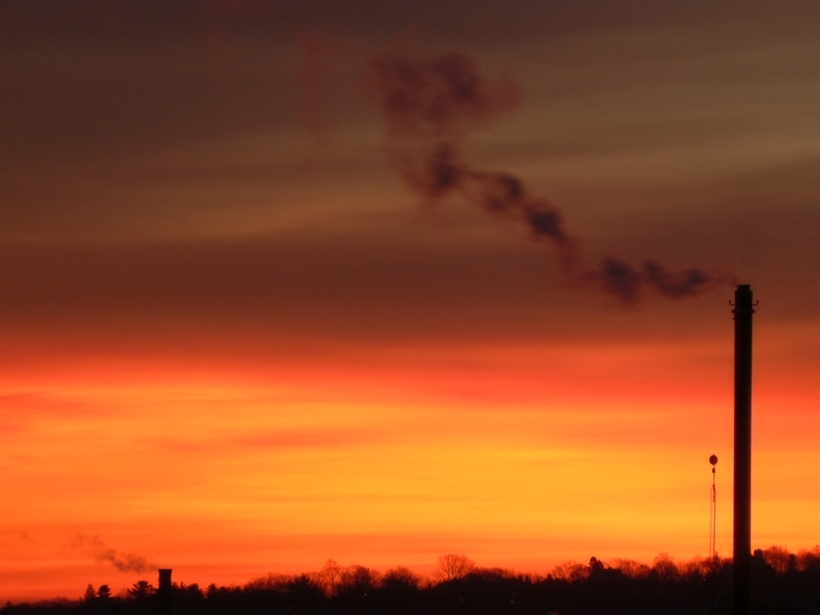Negative emissions may be required to limit global warming to the agreed target of less than 2°C.
The recent Paris Agreement (21st Conference of the Parties (COP21)) recognized that carbon dioxide removal (CDR), or negative emissions, may be required to limit global warming to the agreed target of less than 2°C. In this context, there is an urgent need to assess how CDR could help mitigate climate change or even reverse it. In response to COP21 and to better understand the potential risks and benefits of different options, the Carbon Dioxide Removal Model Intercomparison Project (CDR-MIP) was created to coordinate and advance our understanding of CDR in the Earth system.
The inaugural CDR-MIP workshop in Potsdam, Germany, brought together experts in Earth systems and integrated assessment modeling to investigate CDR-MIP simulations and discuss new experiments and their design. Participants presented results on the first CDR-MIP experiment (C1) on climate reversibility and worked to finalize the designs of additional phase 1 CDR-MIP experiments (C2, C3, and C4). The workshop also sought to link the experiments to upcoming policy-relevant assessments like the Intergovernmental Panel on Climate Change special report on global warming of 1.5°C.
Results from the C1 experiments found that peak carbon dioxide (CO2) in the atmosphere precedes peaks in all climate variables and may alter the spatial patterns of climate variability. After peak CO2, some climate variables (e.g., temperature) return quickly to their preindustrial value. Other variables, like ocean overturning circulation, which plays a critical role in controlling weather and climate, peak several decades later and can take hundreds to thousands of years to return to their preindustrial value. These results have profound implications for the emission trajectories needed to reach the goals of the COP21 agreement and maintain key ecosystem services such as food production. The results may also inform social responses and strategies for adapting to a changing climate.

Future C2 experiments will quantify the efficiency and response of the Earth system to direct CO2 air capture, with a particular focus on carbon-climate feedbacks. One remaining experiment will focus on afforestation and reforestation—extending and restoring forest cover (C3). Another involves ocean alkalinity injection, simulating enhancing natural weathering by adding alkalinity-altering materials such as calcium oxide and olivine to the ocean to enhance its capacity to draw CO2 out of the atmosphere (C4).
They examined the feasibility of experiments focusing on bioenergy carbon capture and storage, which underpin many proposed low-carbon pathways.
Given the increasing interest in CDR methods not included in the phase 1 experiments, participants also discussed additional experiments. Among the possibilities, they examined the feasibility of experiments focusing on bioenergy carbon capture and storage, which underpin many proposed low-carbon pathways. It was also widely acknowledged that there is an increasing demand for future experimental designs that combine different CDR techniques. One option involved collaborations with the Geoengineering Model Intercomparison Project to combine CDR with solar radiation management methods. Likewise, non-CO2 greenhouse gas removal was also seen as an important topic to investigate.
The data generated by the CDR-MIP will be publicly available. We encourage other communities, like those working on adaptation and biological impacts, to use the data to explore the potential future response of the Earth system to CDR. We welcome other modeling groups interested in submitting simulations to join CDR-MIP.
We acknowledge support for this workshop from the Institute for Advanced Sustainability Studies and a German Research Foundation (DFG) grant (KE 2149/1-1) and thank Vivian Scott for help in preparing the manuscript. CDR-MIP is jointly led by David Keller, Andrew Lenton, Naomi Vaughan, and Vivian Scott.
—Andrew Lenton (email: [email protected]), Oceans and Atmosphere, Commonwealth Scientific and Industrial Research Organisation, Hobart, Australia; and Antarctic Climate and Ecosystems Co-operative Research Centre, Hobart, Australia; David Keller, GEOMAR Helmholtz Centre for Ocean Research, Kiel, Germany; and Patrik Pfister, Climate and Environmental Physics, Physics Institute, University of Bern, Switzerland; and Oeschger Center for Climate Change Research, University of Bern, Switzerland
Citation:
Lenton, A.,Keller, D., and Pfister, P. (2017), How will Earth respond to plans for carbon dioxide removal?, Eos, 98, https://doi.org/10.1029/2017EO068385. Published on 22 March 2017.
Text subject to Crown copyright.
Except where otherwise noted, images are subject to copyright. Any reuse without express permission from the copyright owner is prohibited.
Text subject to Crown copyright.
Except where otherwise noted, images are subject to copyright. Any reuse without express permission from the copyright owner is prohibited.

